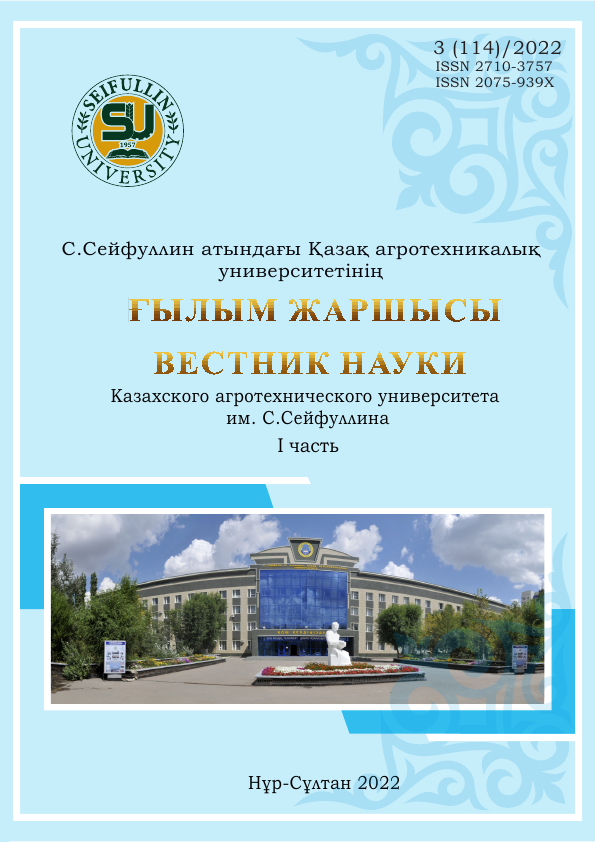PREVALENCE OF HERD HORSES’ GASTROINTESTINAL TRACT HELMINTHS IN THE REGIONS OF KAZAKHSTAN
DOI:
https://doi.org/10.51452/kazatu.2022.2(113).1013Keywords:
horses; Kazakhstan; Strongylata spp.; Parascaris equorum; Anoplocephala spp.; Oxyuris equ;, Strongyloides westeri.Abstract
The article presents the results of coproscopic studies of 366 herd horses, including three age groups, for intestinal helminths in seven farms of southern, central and eastern Kazakhstan. It was found that the helminths’ fauna is represented by species of Strongylata suborder, Parascaris equorum, Schrank, 1788, Oxyuris equi, Schrank, 1788, Strongyloides westeri, Bavay, 1876, belonging to Nematoda class, as well as the genus Anoplocephala, Blanchard, 1848 from Cestode class. Animals in all regions were for 100% infested with Strongylata spp. with high infection intensity (II) – 1315±385 eggs per g of faeces. Horses from the southern region were infected with P.equorum with prevalence 23.4% and the II 135±25 eggs/g; from the eastern part of the country – 35.8% and 200±25 eggs/g; from the northern region - 23.4% and 220±65 eggs/g, respectively. The average prevalence of animals with O.equi in the south of the republic was 41.0% and II 140±50 eggs/g; in the east, 34.9% and 400±70 eggs/g; and in the north - 6.3% and 180±50 eggs/g, respectively. Prevalence with Anoplocephala spp. of horses in the southern region reached 24.1% and II 65±35 eggs/g, in the eastern - 23.1% and 115±40 eggs/g, respectively. For the first time in the south of Kazakhstan the species Strongyloides westeri, Bavay, 1876 was described in a horse with prevalence 35.5% and the invasion intensity of 108 ± 25 eggs per g of feces. The high degree of infestation by several nematode species requires the development of
effective regional measures to control equine parasitoses.

